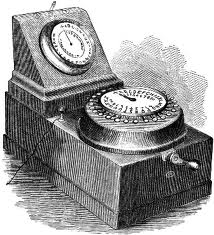The Rise and fall Electric Telegraph

Technological advancement has led to the outdating of the electric telegraph as a means of communication. Electric telegraph transmitted signals through wires from the source to the destination that were converted into the message. Claude Chappe invented the non-electric telegraph in 1794. Later, the electric telegraph replaced the optical one. The Crude telegraph was invented in Bavira by Samuel Soemmering. In 1928, Harrison Dyar invented the first telegraph in the USA. In 1825, William Sturgeon, a British inventor, invented electromagnet which formed the foundation of electronic communication. The electromagnetic idea was later use by Joseph Henry (1797-1878) to demonstrate the possibility of distance communication.
Further developments were achieved by Samuel Morse in 1935 when he was a professor at the New York University. He proved that wires were able to transmit signals. He used current pulses to deflect an electromagnet which moved a marker to develop codes written on a piece of paper. With financial empowerment, Samuel Morse and his Associates had access to private funds which helped them to spread their line to Philadelphia and New York. As a result, small telegraph companies were developed and they started their operations in the Midwest, South, and East. Dispatching trains using telegraph began in 1851 and in the same year. Multiplexing was later developed by the Western Union in 1913. This technology could allow transmission of 8 messages, four in each direction simultaneously over a single wire. Later, teleptrinter machines and Varioplex were invented in 1925 and 1936 respectively. Later western union introduced facsimile devices and it inaugurated TELEX in 1959. The inventions by western union therefore lead to the gradual eradication of the electric telegraph.
